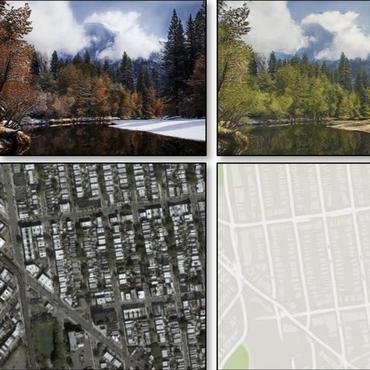Standardized CycleGAN training for unsupervised stain adaptation in invasive carcinoma classification for breast histopathology
Generalization is one of the main challenges of computational pathology. Slide preparation heterogeneity and the diversity of scanners lead to poor model performance when used on data from medical centers not seen during training. In order to achieve stain invariance in breast invasive carcinoma patch classification, we implement a stain translation strategy using cycleGANs for unsupervised image-to-image translation. We compare three cycleGAN-based approaches to a baseline classification model obtained without any stain invariance strategy. Two of the proposed approaches use cycleGAN's translations at inference or training in order to build stain-specific classification models. The last method uses them for stain data augmentation during training. This constrains the classification model to learn stain-invariant features. Baseline metrics are set by training and testing the baseline classification model on a reference stain. We assessed performances using three medical centers with H&E and H&E&S staining. Every approach tested in this study improves baseline metrics without needing labels on target stains. The stain augmentation-based approach produced the best results on every stain. Each method's pros and cons are studied and discussed in this paper. However, training highly performing cycleGANs models in itself represents a challenge. In this work, we introduce a systematical method for optimizing cycleGAN training by setting a novel stopping criterion. This method has the benefit of not requiring any visual inspection of cycleGAN results and proves superiority to methods using a predefined number of training epochs. In addition, we also study the minimal amount of data required for cycleGAN training.
PDF Abstract




